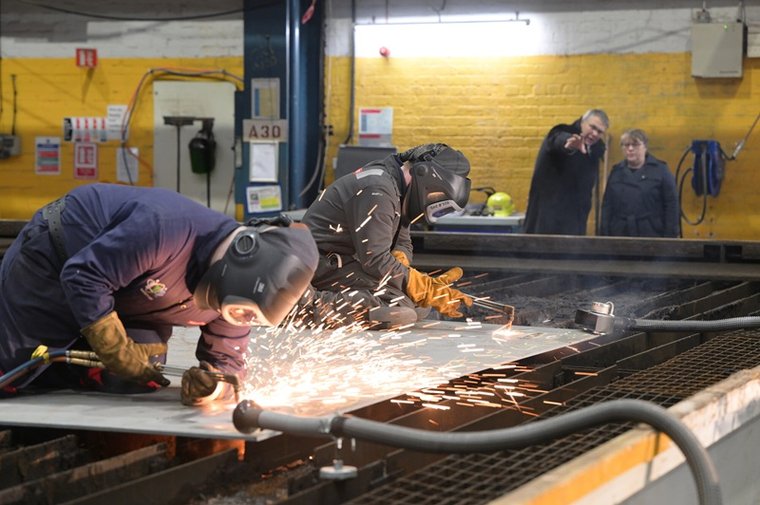Details
More Products & Services
Products & Services
Defence Insight
Shephard Media
Some of the things people like you use Defence Insight for:
- Total addressable market sizing ($)
- Competitor analysis
- Cost analysis
- Market forecasting
- Growth identification
- Increasing closing ratio
- Increasing closing order value
- Estimating product potential
- Calculating sales forecasting
- Supply and demand analysis
- Total addressable market sizing ($)
- Competitor analysis
- Cost analysis
- Market forecasting
- Growth identification
- Increasing closing ratio
- Increasing closing order value
- Estimating product potential
- Calculating sales forecasting
- Supply and demand analysis
Shephard Plus Update
Shephard Media
Shephard Plus is updating in June 2018 with rich new capabilities, and is now one of the most cost-effective and valuable aerospace and defence market intell...
Military Unmanned Systems Handbook
Shephard Media
The Military Unmanned Systems Handbook (Digital Download) is an international guide to the military UV industry and provides detailed information on air, ground and sea (surface & sub-sea) vehicles as well as subsystems. What's included: Unencrypted 390+ page PDF of equipment and supplier information Market summary
Description
Steel cutting has begun on the fifth of eight vessels in the UK's Type 26 frigate fleet.
HMS Sheffield - the second of Batch 2 of the Type 26 City-class frigates set to begin duty after 2030 - joined HMS Glasgow, HMS Cardiff, HMS Belfast, and HMS Birmingham as a work in progress at the BAE Systems Govan shipyard on 28 November.
All eight vessels in the fleet will be built on Clydeside, historically a centre of British shipbuilding, with the work sustaining 2,000 jobs in Scotland, and as many again across the UK maritime supply chain.
Related Articles
Insight: How rising tensions have fuelled the Type 26 frigate's development
UK warship HMS Cardiff begins float-off process
HMS Glasgow gets its smart gun
Work on the Type 26 vessels was split into two batches, with Glasgow, Cardiff and Belfast due to be operating before the end of 2030 as replacements for the Royal Navy's ageing Type 23 Duke-class frigates.
The cost of the five vessels in Batch 2 was placed at £4.2 billion (US$5.6 billion), compared to £3.7 billion ($4.7 billion) for the first three vessels in the fleet.
The Type 26 City-class frigate has been designed for modular use, with bays that can be filled with mission-specific technology or equipment, depending on the demands of the mission. As such, HMS Sheffield will be significantly more multi-functional than any vessel in the Type 23 Duke class, allowing it to tackle everything from counter-piracy patrols and disaster relief to high-intensity naval combat.
HMS Sheffield, and the other vessels in the Type 26 City-class, will have a length of 149m, a speed of 26kt and a range of 11,000km, giving it greater endurance between refuellingthan its Type 23 predecessor.
Minister for Defence Procurement and Industry Maria Eagle, speaking at the steel cutting ceremony, said HMS Sheffield represented “a cutting-edge addition to our fleet".
The next Type 26 to cut steel will be HMS Newcastle. The first three Type 26 vessels are making their way towards full operational capability and the first of class,HMS Glasgow, isscheduled to enter service in 2028.
Related Equipment in Defence Insight
Duke Class (Type 23)
City Class (Type 26)
HMS Sheffield - the second of Batch 2 of the Type 26 City-class frigates set to begin duty after 2030 - joined HMS Glasgow, HMS Cardiff, HMS Belfast, and HMS Birmingham as a work in progress at the BAE Systems Govan shipyard on 28 November.
All eight vessels in the fleet will be built on Clydeside, historically a centre of British shipbuilding, with the work sustaining 2,000 jobs in Scotland, and as many again across the UK maritime supply chain.
Related Articles
Insight: How rising tensions have fuelled the Type 26 frigate's development
UK warship HMS Cardiff begins float-off process
HMS Glasgow gets its smart gun
Work on the Type 26 vessels was split into two batches, with Glasgow, Cardiff and Belfast due to be operating before the end of 2030 as replacements for the Royal Navy's ageing Type 23 Duke-class frigates.
The cost of the five vessels in Batch 2 was placed at £4.2 billion (US$5.6 billion), compared to £3.7 billion ($4.7 billion) for the first three vessels in the fleet.
The Type 26 City-class frigate has been designed for modular use, with bays that can be filled with mission-specific technology or equipment, depending on the demands of the mission. As such, HMS Sheffield will be significantly more multi-functional than any vessel in the Type 23 Duke class, allowing it to tackle everything from counter-piracy patrols and disaster relief to high-intensity naval combat.
HMS Sheffield, and the other vessels in the Type 26 City-class, will have a length of 149m, a speed of 26kt and a range of 11,000km, giving it greater endurance between refuellingthan its Type 23 predecessor.
Minister for Defence Procurement and Industry Maria Eagle, speaking at the steel cutting ceremony, said HMS Sheffield represented “a cutting-edge addition to our fleet".
The next Type 26 to cut steel will be HMS Newcastle. The first three Type 26 vessels are making their way towards full operational capability and the first of class,HMS Glasgow, isscheduled to enter service in 2028.
Related Equipment in Defence Insight
Duke Class (Type 23)
City Class (Type 26)

Share
Recent Chats
Share via email
Future: handle WhatsApp here
Future: handle LinkedIn here
Future: handle Twitter here
SUBMENU HERE
Share via Chat
Copy Link



